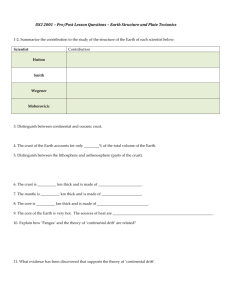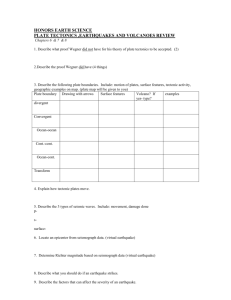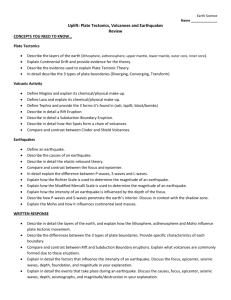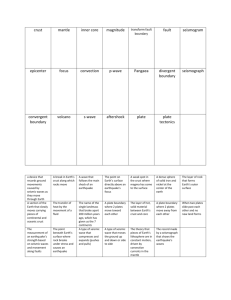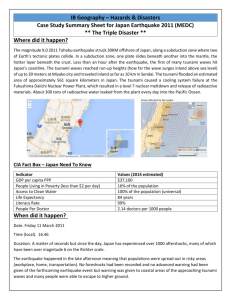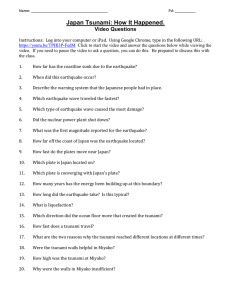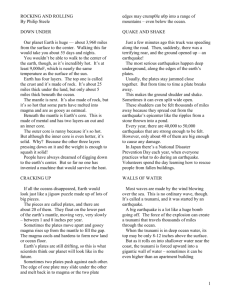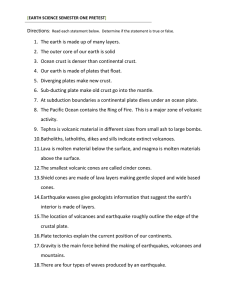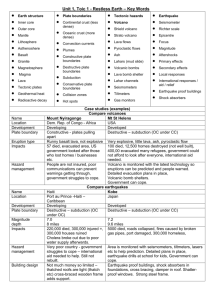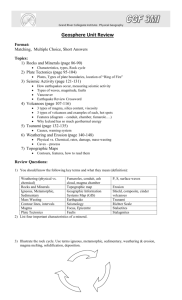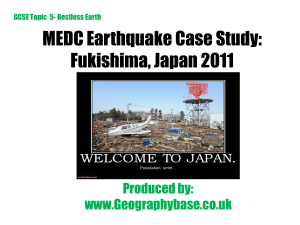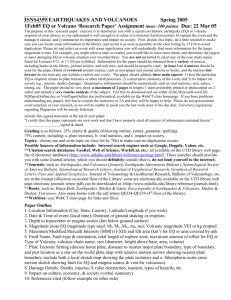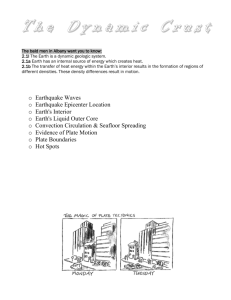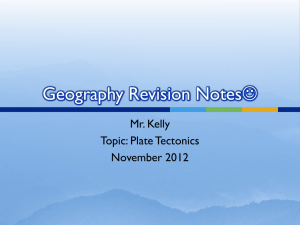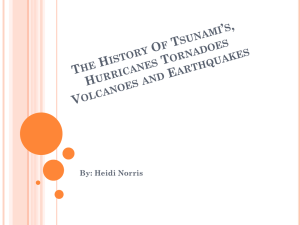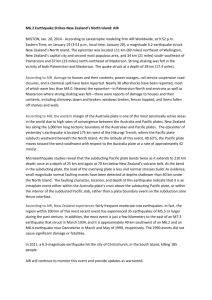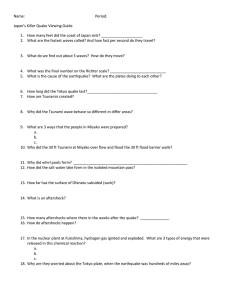Exam #2: study guide
advertisement
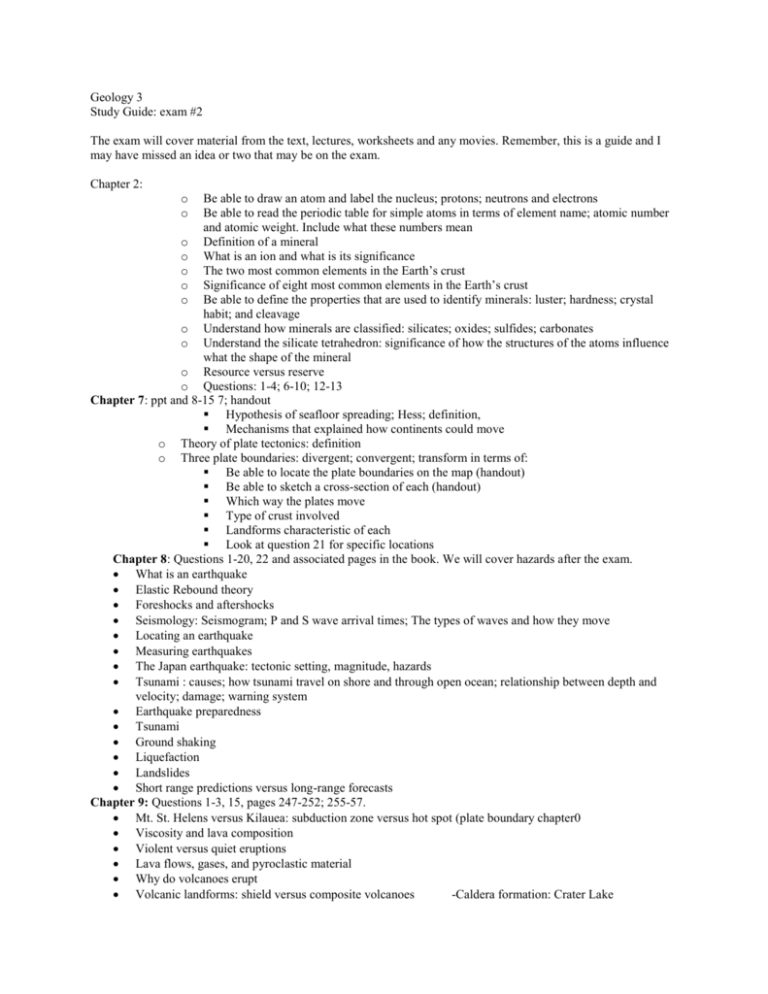
Geology 3 Study Guide: exam #2 The exam will cover material from the text, lectures, worksheets and any movies. Remember, this is a guide and I may have missed an idea or two that may be on the exam. Chapter 2: o o Be able to draw an atom and label the nucleus; protons; neutrons and electrons Be able to read the periodic table for simple atoms in terms of element name; atomic number and atomic weight. Include what these numbers mean o Definition of a mineral o What is an ion and what is its significance o The two most common elements in the Earth’s crust o Significance of eight most common elements in the Earth’s crust o Be able to define the properties that are used to identify minerals: luster; hardness; crystal habit; and cleavage o Understand how minerals are classified: silicates; oxides; sulfides; carbonates o Understand the silicate tetrahedron: significance of how the structures of the atoms influence what the shape of the mineral o Resource versus reserve o Questions: 1-4; 6-10; 12-13 Chapter 7: ppt and 8-15 7; handout Hypothesis of seafloor spreading; Hess; definition, Mechanisms that explained how continents could move o Theory of plate tectonics: definition o Three plate boundaries: divergent; convergent; transform in terms of: Be able to locate the plate boundaries on the map (handout) Be able to sketch a cross-section of each (handout) Which way the plates move Type of crust involved Landforms characteristic of each Look at question 21 for specific locations Chapter 8: Questions 1-20, 22 and associated pages in the book. We will cover hazards after the exam. What is an earthquake Elastic Rebound theory Foreshocks and aftershocks Seismology: Seismogram; P and S wave arrival times; The types of waves and how they move Locating an earthquake Measuring earthquakes The Japan earthquake: tectonic setting, magnitude, hazards Tsunami : causes; how tsunami travel on shore and through open ocean; relationship between depth and velocity; damage; warning system Earthquake preparedness Tsunami Ground shaking Liquefaction Landslides Short range predictions versus long-range forecasts Chapter 9: Questions 1-3, 15, pages 247-252; 255-57. Mt. St. Helens versus Kilauea: subduction zone versus hot spot (plate boundary chapter0 Viscosity and lava composition Violent versus quiet eruptions Lava flows, gases, and pyroclastic material Why do volcanoes erupt Volcanic landforms: shield versus composite volcanoes -Caldera formation: Crater Lake

